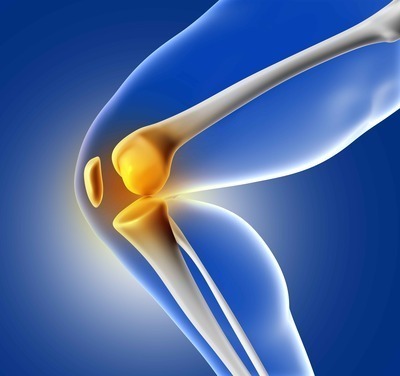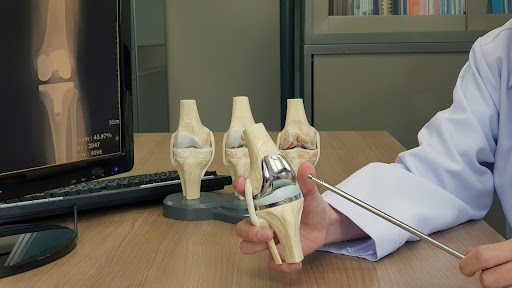Orthopaedic
Knee Arthroscopy Unveiled: Understanding the Procedure and Benefits

by admin
19th January 2024
6 minutes read
Introduction
Knee arthroscopy surgery is a minimally invasive surgical procedure. It has become increasingly popular in the realm of orthopedic medicine. This advanced technique allows surgeons to diagnose and treat a variety of knee conditions with smaller incisions, reduced pain, and faster recovery times when compared to traditional open surgery. Here we will delve into the intricacies of knee arthroscopy, exploring the procedure itself and shedding light on the numerous benefits it offers to patients dealing with knee issues.
Understanding Knee Arthroscopy
Knee arthroscopy involves the use of a tiny camera, called an arthroscope. This is inserted through small incisions around the knee joint. This camera transmits real-time images to a monitor, allowing the surgeon to visualize the knee’s internal structures. During the procedure, the surgeon may also insert specialized instruments through additional small incisions to repair or remove damaged tissues.
One of knee arthroscopy’s primary advantages is its versatility. It can be employed to address various knee conditions, including ligament injuries, meniscal tears, cartilage damage, and synovitis. The ability to directly visualize and access the affected area with minimal disruption to surrounding tissues makes knee arthroscopy an invaluable tool for both diagnosis as well as treatment.
Knee Arthroscopy: Procedure
The knee arthroscopy procedure involves several key steps, from preoperative preparations to postoperative care. Here’s the process overview:
Preoperative Evaluation:
Before the procedure, the patient undergoes a thorough examination and may have imaging tests such as X-rays, MRI, or CT scans to help the surgeon assess the condition of the knee joint.
Anesthesia:
Knee arthroscopy is usually performed under regional/general anesthesia. The choice depends on the patient’s health, the complexity of the procedure, as well as the surgeon’s preference.
Incision Placement:
The surgeon makes small incisions, usually ranging from 5 to 10 millimeters, around the knee joint. These incisions serve as entry points for the arthroscope and other surgical instruments.
Arthroscope Insertion:
The arthroscope, a thin and flexible tube with a camera and light source, is inserted through one of the incisions. The camera sends real-time images to a monitor in the operating room, allowing the surgeon to visualize the internal structures of the knee.
Joint Exploration and Diagnosis:
The surgeon explores the knee joint, examining the cartilage, ligaments, menisci, and other structures. The arthroscopic images help in making an accurate diagnosis and determining the extent of the injury or condition.
Surgical Intervention:
Depending on the findings, the surgeon may use additional incisions to introduce specialized instruments for surgical intervention. Common procedures during knee arthroscopy include repairing torn menisci, removing loose cartilage or debris, trimming damaged cartilage, and reconstructing ligaments.
Closure of Incisions:
Once the necessary procedures are completed, the surgeon closes the incisions with sutures or sterile strips. These incisions are small, contributing to reduced scarring and faster healing.
Recovery and Postoperative Care:
After the procedure, the patient is moved to the recovery room. The medical team monitors vital signs and ensures the patient is comfortable. In most cases, patients can return home on the same day.
Postoperative Rehabilitation:
Rehabilitation and physical therapy play a crucial role in the recovery process. The surgeon or a physical therapist may provide specific exercises to help strengthen the knee, improve range of motion, and promote overall recovery.
Follow-up Appointments:
Patients typically have follow-ups with the surgeon to monitor progress, address any concerns, and adjust the rehabilitation plan as needed.
Benefits of Knee Arthroscopy
Minimally Invasive Nature:
Knee arthroscopy involves small incisions, significantly reducing the trauma to the surrounding tissues. This minimally invasive approach leads to less pain, swelling, and scarring compared to traditional open surgery. Patients often experience a faster recovery. They can return to their normal activities sooner.
Accurate Diagnosis:
The high-resolution images provided by the arthroscope enable surgeons to make precise diagnoses. This accuracy is crucial for identifying the root cause of knee problems and tailoring the treatment plan to each patient’s specific needs.
Faster Recovery Time:
The reduced tissue trauma and smaller incisions contribute to a quicker recovery time for patients undergoing knee arthroscopy. Many individuals can resume normal activities within a few weeks, compared to the more extended recovery period associated with open surgery.
Outpatient Procedure:
Knee arthroscopy is often performed on an outpatient basis. That means, the patients can go home on the same day as the surgery. This not only reduces the overall cost but also minimizes the inconvenience of a hospital stay.
Lower Infection Risk:
The smaller incisions in knee arthroscopy decrease the risk of infection compared to larger incisions in open surgery. This is particularly beneficial for patients with underlying health conditions or compromised immune systems.
Preservation of Healthy Tissues:
Knee arthroscopy allows surgeons to target and treat the specific area of concern without disrupting healthy surrounding tissues. This preservation of healthy tissues is crucial for maintaining the long-term function and stability of the knee joint.
Conclusion
In conclusion, knee arthroscopy stands as a revolutionary technique in orthopedic medicine, providing both diagnostic clarity and effective treatment for a range of knee conditions. Its minimally invasive nature, coupled with the ability to address various issues, makes it a preferred choice for patients and surgeons alike. The benefits of knee arthroscopy extend beyond just the surgical realm, impacting recovery times, infection risks, and overall patient satisfaction. As technology continues to advance, knee arthroscopy is likely to evolve further, offering even more precise and tailored solutions for individuals seeking relief from knee problems. As patients become more informed about their treatment options, knee arthroscopy undoubtedly unveils a promising future in the field of orthopedics.
Also Read :
FAQs
Q. How long does it take one to recover from knee arthroscopy?
A. Recovery times vary, however, many patients can resume normal activities within a few weeks, with complete recovery often taking several months.
Q. Is knee arthroscopy suitable for all knee problems?
A. While versatile, knee arthroscopy is not suitable for all conditions; its appropriateness depends on the specific diagnosis and severity of the knee issue.
Q. Are there risks associated with knee arthroscopy?
A. While generally safe, risks include infection, blood clots, and damage to surrounding structures; consulting with the surgeon helps understand individual risk factors.
Q. Can knee arthroscopy prevent the need for total knee replacement?
A. Knee arthroscopy primarily addresses specific issues; it may delay, but not necessarily prevent, the need for total knee replacement in cases of advanced joint degeneration.
CATEGORIES
- ACL Reconstruction
- Anal Fissures
- Anal Fistula
- Appendicitis
- ASK A DOCTOR
- Benign Prostatic Hyperplasia
- Breast Lump Excision
- Cataract
- Circumcision
- Conditions & Diseases
- Cosmetology
- Covid-19
- Cure
- Endocrinology
- ENGLISH VIDEOS
- Eye Care
- Gallstones
- General Surgeries
- Government Schemes
- Gynaecology
- Gynecomastia
- Health
- Health Insurance
- Hernia
- Hindi
- Hip Arthoscopy
- Hip Replacement
- Hip Replacement Surgery
- Hydrocele
- Kannada
- Kidney Stones
- Knee Arthroscopic
- Laparoscopic
- LASER
- Latest Treatments
- Lifestyle
- Liposuction
- Medfin Stories
- Medicine
- Nephrology
- Ophthalmology
- Orthopaedic
- Paraphimosis
- Patient Testimonials
- PCL Reconstruction
- Phimosis
- Piles (Hemorrhoids)
- Pilonidal Sinus
- Proctology
- Prostate Artery Embolization
- Rhinoplasty
- Second Opinion
- Total Knee Replacement
- Urology
- Uterine Artery Embolization
- Uterine Fibroids
- Varicocele
- Varicose Veins
- Vascular
- VIDEOS







